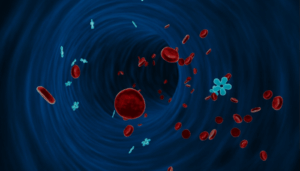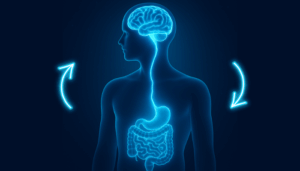As we age, our body’s cells begin to communicate less effectively with each other. This altered intercellular communication can lead to various negative effects on our health, including the chronic inflammation often seen in ageing-related diseases.
Cellular communication is essential to maintaining a balanced internal environment, or homeostasis, within the body. Cells release signalling molecules that either directly affect neighbouring cells or travel through the bloodstream to impact distant cells and tissues.
As we age, the signalling systems that govern these chemical messages become more inflammatory, leading to a decline in immune system function and potentially causing muscle and bone loss, among other harmful effects. This process is known as “inflammaging” and can seriously affect our overall health.
Ageing is a complex process with interconnected cellular and molecular hallmarks, including alterations in intercellular communication. These changes can result in deficiencies in neural, neuroendocrine, and hormonal signalling pathways, such as the adrenergic, dopaminergic, and insulin/IGF1-based and renin-angiotensin systems, as well as sex hormones that decline with the loss of reproductive function.
Many factors can contribute to altered intercellular communication, including cell-intrinsic causes. The senescence-associated secretory phenotype (SASP) is one well-documented example of this.
The SASP is a collection of signalling molecules released by senescent cells, which have stopped dividing and undergone irreversible changes due to age or other factors.
The SASP includes cytokines, growth factors, and other molecules that can harm neighbouring cells and tissues, leading to chronic inflammation and other age-related conditions.
The alterations in intercellular communication ultimately sum up to a hallmark on its own, bridging the cell-intrinsic hallmarks to meta-cellular hallmarks, including the chronification of inflammatory reactions.
This is coupled with the decline of immunosurveillance against pathogens and premalignant cells and the alterations in the bidirectional communication between the human genome and microbiome, resulting in dysbiosis.
Research has focused on searching for blood-borne systemic factors with pro-aging or pro-longevity properties, the role of diverse communication systems between cells, and evaluating the functional relevance of extracellular matrix (ECM) disruption during aging.
The ECM is a complex network of proteins and other molecules that provide structural support for tissues and organs in the body. Aging can cause numerous damages to the long-lived protein components of the ECM, including advanced glycation end-products (AGEs), elastin fragmentation, and collagen crosslinking, leading to tissue fibrosis.
This harmful process is partly due to the excessive release of TGF-b and other growth factors and the nuclear translocation of transcription factors that trigger the expression of pro-fibrotic genes.
Several studies have provided causal evidence for the contribution of ECM stiffness to ageing and have suggested approaches for improving healthy ageing.
These include inhibition of Piezo1, which results in the rejuvenation of oligodendrocyte progenitors in the brain of old mice, genetic inactivation of YAP/TAZ in stromal cells to prevent the emergence of ageing features, and the use of ECM compounds such as chondroitin sulfate and hyaluronic acid to restore the age-related decline of collagen and increase lifespan in nematodes.
Altered intercellular communication is a hallmark of ageing and has significant implications for our health. A better understanding of these changes and their underlying causes may lead to new interventions and therapies to help promote healthy ageing and prevent or treat ageing.
Stem Cell Exhaustion
Stem cells are essential for regenerating and repairing tissues in our body. These cells are capable of developing into any other type of cell, making them critical for maintaining healthy organ funct…







